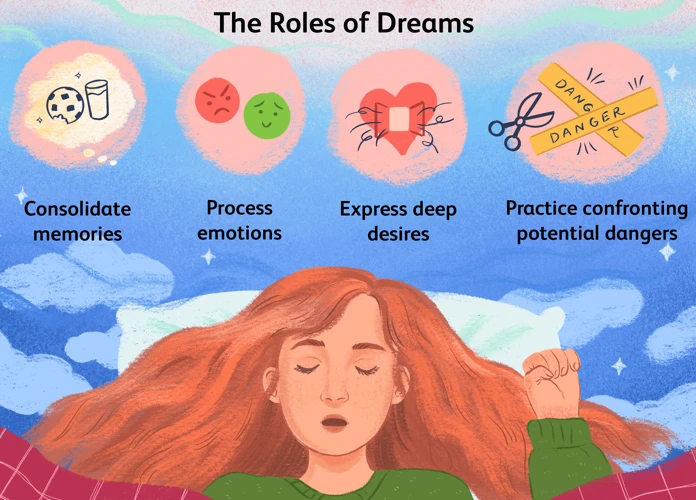As we delve into the realms of dreams and artistic expression, we enter a world where the unimaginable becomes tangible, and the boundaries of reality blur. Dreams have long fascinated and perplexed humanity, with their ability to transport us to extraordinary landscapes and evoke powerful emotions. In this article, we will explore the profound relationship between dream archetypes and artistic expression. From understanding the influence of dreams as a source of inspiration to unraveling the symbolism embodied in dream archetypes, we will journey through the depths of the subconscious, where creativity knows no bounds. Join us as we embark on a captivating exploration of the intricate connection between dreams and the world of art.
The Power of Dreams
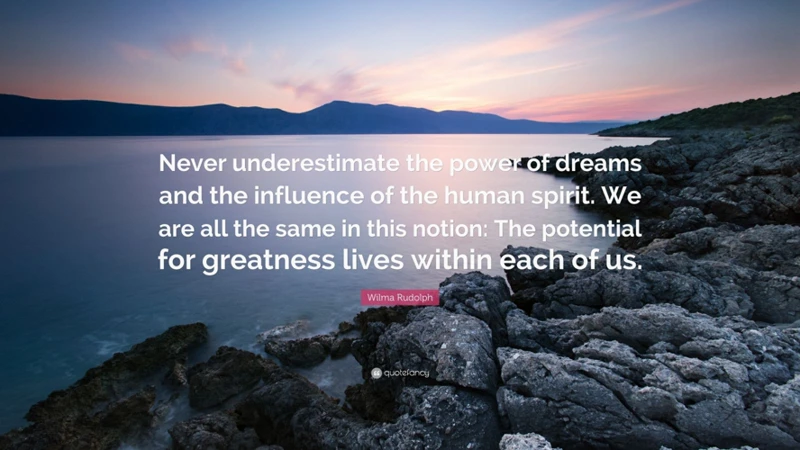
Dreams possess an inexplicable power that captivates our minds and fuels our creativity. They offer a gateway to a realm where imagination reigns supreme, unbound by the limitations of the waking world. Through dreams, we are transported to a kaleidoscope of vivid imagery, evoking a whirlwind of emotions that stay with us long after we awaken. Dreams serve as a wellspring of inspiration for artists, providing a rich tapestry of ideas and images to draw upon in their artistic endeavors. It is during these dreamscapes that the seeds of innovation are often sown, sparking the birth of groundbreaking artistic movements. Surrealism, for example, found its roots in the exploration of dreams and the subconscious mind, pushing the boundaries of reality in art. Artists such as Salvador Dalí and René Magritte drew upon their dream experiences to create otherworldly and thought-provoking works of art. From visual artists to writers, musicians to filmmakers, dream-inspired creations reflect the profound impact dreams have on the artistic process. They hold the key to unlocking our creativity and tapping into the deepest recesses of our imagination, allowing us to bring forth unique and extraordinary expressions of art.
1. Dreams as a Source of Inspiration
Dreams serve as a profound source of inspiration for artists across various disciplines. When we dream, our minds break free from the constraints of reality, allowing us to explore new realms of possibility. The vivid and often surreal imagery experienced in dreams sparks the imagination, offering a wellspring of ideas for artistic creation. Artists find inspiration in the enigmatic narratives that unfold in their dreams, utilizing them as a catalyst for their work. Painters may depict dreamscapes and fantastical creatures, while writers may incorporate dream sequences into their storytelling. Musicians may find melodies and rhythms that echo the ethereal quality of their dreams. The role of dreams as a source of inspiration can be seen throughout artistic history, from the ancient cave paintings to the Renaissance masterpieces and contemporary works. The unpredictable nature of dreams provides artists with a vast reservoir of ideas, challenging them to interpret and translate the intangible into tangible forms of expression. As dreams continue to inspire artists, their influence on the evolution of artistic movements and individual creative processes remains an awe-inspiring testament to the power of the sleeping mind.
2. The Role of Dream Archetypes
Dream archetypes play a pivotal role in shaping our dreams and influencing our artistic expression. These archetypes are universal symbols and themes that appear across cultures and time, transcending individual experiences. They are the fundamental building blocks of our dreams, representing deep-seated human emotions, fears, desires, and aspirations. Understanding dream archetypes allows us to tap into the collective unconscious, connecting with shared experiences and tapping into the well of inspiration that lies within. Some common dream archetypes include the persona, the shadow, the anima/animus, the wise old man/woman, and the hero/heroine. These archetypes often manifest in our dreams in various forms, guiding and challenging us to explore different aspects of our psyche. By recognizing and interpreting dream archetypes, artists can delve deeper into their own subconscious and extract profound meaning to infuse into their artistic creations. They serve as a wellspring of inspiration, providing a framework through which artists can explore and express complex emotions and ideas. By incorporating dream archetypes into their work, artists can create powerful and relatable pieces of art that resonate with audiences on a subconscious level. The surrealist movement is a prime example of artists who incorporated dream archetypes into their work, using them as a means to challenge societal norms and explore the depths of the human psyche.
Exploring Dream Archetypes
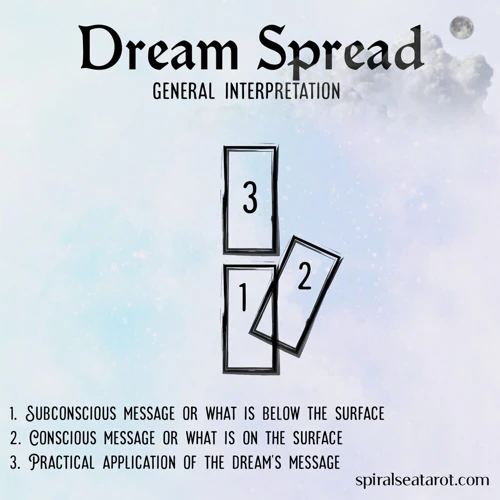
Dream archetypes hold the key to unraveling the depths of our subconscious minds and understanding the symbolic language of our dreams. Common dream archetypes provide a framework through which we can interpret and analyze our dream experiences. These archetypes are recurring themes and motifs that emerge across cultures and time periods, representing universal aspects of the human psyche. Some common dream archetypes include the Shadow, the Wise Old Man/Woman, the Hero, and the Trickster. Each archetype carries its own unique symbolism and meaning, offering insights into our fears, desires, and struggles. Psychological analysis of dream archetypes delves into the underlying psychological processes and implications behind these symbols. Psychologists like Carl Jung have explored the collective unconscious and its influence on dream archetypes. Understanding dream archetypes allows us to gain a deeper understanding of ourselves and our emotions, providing a wellspring of inspiration for artistic expression. By incorporating these archetypes into their work, artists can tap into the collective human experience and evoke powerful emotions and connections with their audience. It is through the exploration of dream archetypes that we unearth the hidden complexities of the human mind and the profound impact they have on our artistic endeavors.
1. Understanding Common Dream Archetypes
Understanding common dream archetypes is like deciphering the secret language of the subconscious mind. These archetypes are recurring symbols and patterns that appear in dreams, transcending cultural boundaries and speaking to the universal aspects of human experience. One of the most prevalent dream archetypes is the “shadow,” representing the hidden and repressed aspects of our personality. It is often symbolized by dark figures or threatening animals, reflecting our deepest fears and insecurities. Another common archetype is the “hero,” symbolizing our inner strength and courage. This archetype often appears in dreams during times of personal growth or transformation. The “journey” archetype takes us on an epic quest, representing our search for meaning and purpose in life. These archetypes, among many others, serve as a window into the subconscious, providing valuable insights into our emotions, desires, and unresolved conflicts. By unraveling the significance of these archetypes, artists can tap into a wellspring of inspiration and create work that resonates deeply with others. Exploring and documenting dreams through dream journals allows artists to delve into the symbolism and meanings behind these archetypes, igniting their artistic expressions with profound depth and insight.
2. Psychological Analysis of Dream Archetypes
The realm of dream archetypes holds a profound fascination for psychologists, as it provides a unique window into the depths of the human psyche. Psychological analysis of dream archetypes involves the exploration and interpretation of recurring symbols and themes that appear in dreams, offering valuable insights into an individual’s subconscious thoughts and emotions. Carl Jung, a renowned Swiss psychiatrist and psychoanalyst, emphasized the significance of dream archetypes in understanding the collective unconscious. He identified several common archetypes, such as the shadow, the anima/animus, and the wise old man/woman. These archetypes are deeply ingrained in our collective human experience and can manifest in dreams as powerful and universally recognizable symbols. By analyzing dream archetypes, psychologists can delve into the underlying motivations, fears, and desires that shape an individual’s subconscious mind. This exploration not only aids in personal growth and self-discovery but also serves as a source of inspiration for artists seeking a deeper understanding of themselves and their work. At the intersection of psychology and art, dream archetypes provide a rich tapestry of symbolism and meaning, sparking the creative fire within and igniting new avenues of artistic expression. To further explore the connection between dreams and artistic inspiration, consider keeping a dream journal to record and reflect on the recurring themes and symbols that emerge from your dreamscapes, providing a wealth of material for artistic interpretation and exploration.
Influence on Artistic Expression
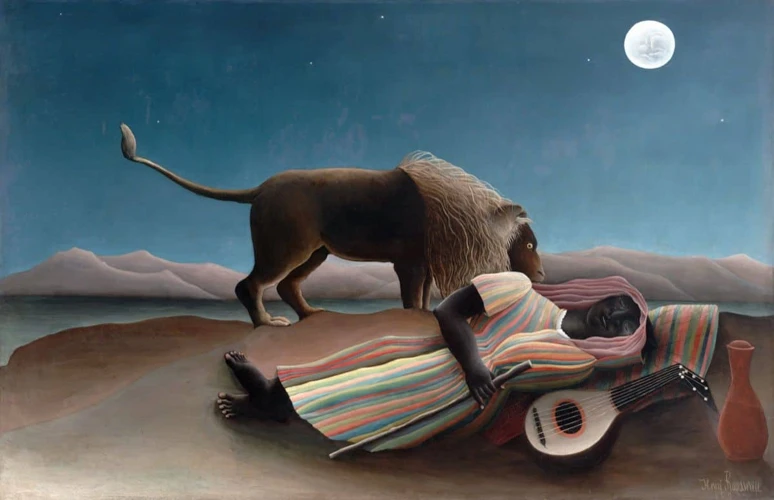
Dream archetypes hold a profound influence on artistic expression, shaping and informing the work of artists across various mediums. Visual artists, for instance, often find themselves drawn to the vivid imagery and symbolism present in their dreams. These powerful visual metaphors provide a wellspring of inspiration, infusing their artwork with layers of meaning and depth. The works of renowned artists such as Frida Kahlo and William Blake are testament to the impact of dream archetypes on artistic expression. Kahlo’s surreal self-portraits, for example, incorporated elements from her dreams to convey her innermost emotions and experiences. Similarly, Blake’s visionary poetry and illustrations were heavily influenced by his dreams, revealing a mystical and fantastical world that transcended the boundaries of reality. In the realm of literature, dreams serve as a catalyst for writers, creating a fertile ground for storytelling and exploring the human psyche. From the works of Gabriel Garcia Marquez, who beautifully weaved dream-like elements into his magical realism novels, to the hauntingly surreal narratives of Haruki Murakami, dream archetypes permeate the pages, captivating readers and plunging them into a realm of imagination and introspection. The realm of dreams, with its enigmatic symbolism and emotional depth, continues to shape and inspire artists, offering a glimpse into the profound relationship between dreams and artistic expression.
1. How Dream Archetypes Inspire Visual Artists
Visual artists find themselves drawn to the enigmatic realm of dream archetypes, which serve as a wellspring of inspiration for their creative endeavors. These archetypes, symbolic representations of recurring themes and motifs in dreams, possess a profound impact on artists’ work. By tapping into the depths of their own subconscious, artists can capture the essence of these archetypes and translate them into visually stunning creations. The dream archetypes act as a catalyst for artistic exploration, encouraging artists to delve into the realms of the surreal, the fantastical, and the symbolic. The transformative power of dream archetypes allows artists to venture beyond the constraints of reality, giving rise to abstract concepts, metaphors, and visual narratives. Through their art, they can explore universal themes, evoke deep emotions, and invite viewers to interpret their creations through their own personal experiences. Whether it’s the depiction of recurring symbols like birds, mirrors, or labyrinths, or the exploration of archetypal characters like the hero or the trickster, dream archetypes provide a rich tapestry of imagery and ideas that artists can use to convey their unique visions. By harnessing the evocative nature of dream archetypes, artists can imbue their work with layers of meaning and invite viewers to embark on a journey of self-reflection and interpretation. If you are interested in exploring further how artists find inspiration in their dreams, you can read more about it in our article “The Role of Dream Journals in Artistic Inspiration.”
2. Dream Archetypes in Literature and Writing
Dream archetypes play a crucial role in shaping the narratives and characters we encounter in literature and writing. Just as visual artists find inspiration in dreams, writers and authors draw upon the symbolic language of dreams to weave intricate tales and develop complex characters. Dreams offer a rich source of material for writers to explore themes of the subconscious, inner struggles, and the human condition. In literature, dream sequences often serve as powerful tools for conveying deep emotions or foreshadowing future events. From the prophetic dreams of ancient Greek tragedies to the surreal dreamscapes found in the works of authors like Lewis Carroll and Jorge Luis Borges, dreams are used as vehicles to explore the depths of the human psyche. By incorporating dream archetypes into their writing, authors can delve into universal themes and tap into the collective unconscious, creating stories that resonate with readers on a profound level. Whether it’s the archetype of the wise old man, the shadowy figure, or the transformative journey, dream archetypes add layers of depth and symbolism to literary works, elevating them from simple narratives to profound explorations of the human experience. Dreams also serve as a catalyst for writers to challenge conventional storytelling methods, pushing the boundaries of imagination and creating literary works that stand the test of time.
Symbolism and Interpretation
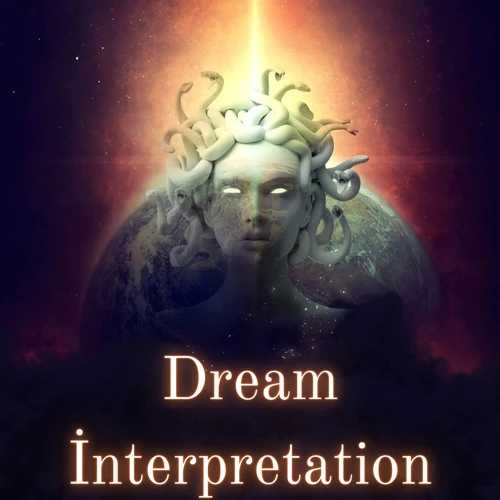
Within the realm of dreams, symbolism reigns supreme. Every image, every event, holds a deeper meaning that goes beyond its surface appearance. Unraveling the symbolism embedded within dream archetypes is a crucial step in understanding their significance and unlocking their potential for artistic interpretation. Symbols in dreams can vary greatly, ranging from universal motifs to personal and cultural references. For example, a snake in a dream may symbolize transformation or hidden fears, while a butterfly may represent rebirth and freedom. These symbols serve as a language of the subconscious, communicating messages and emotions that can be harnessed by artists to convey profound themes in their work. The interpretation of these symbols is a deeply personal process, as their meaning can vary from individual to individual based on their unique experiences and perspectives. Dream journals play a pivotal role in artistic interpretation, as they serve as a repository of dreams and their corresponding symbolism. By keeping a record of dreams, artists can develop a deeper understanding of their personal archetypes, patterns, and recurring symbols. This enables them to tap into the wellspring of inspiration that resides within their own psyche, infusing their art with layers of depth and complexity. By exploring the symbolism of dream archetypes, artists can traverse the boundaries of the conscious mind, offering a profound glimpse into the realms of the human psyche and the mysteries that lie within.
1. Unraveling Symbolism in Dream Archetypes
Unraveling the symbolism embedded within dream archetypes is a fascinating endeavor that allows us to gain deeper insight into the subconscious mind. Each dream archetype carries its own unique symbolism, which can vary in meaning and interpretation based on an individual’s personal experiences and cultural background. To aid in understanding these symbols, dream analysts and psychologists have developed frameworks, such as Carl Jung’s theory of archetypes, to categorize and interpret the recurring images and motifs found in dreams. For example, the archetype of water often symbolizes the depths of the unconscious mind and emotions, while animals can represent untamed instincts or aspects of our own personalities. Interpreting dream symbolism requires careful observation and introspection, as well as an understanding of the specific context and emotions surrounding the dream. An effective approach is to create a dream journal, where individuals can record their dreams and analyze the symbolism over time, identifying patterns and recurring themes. Through this process, one can unlock the hidden meanings within dream archetypes, allowing for a richer understanding of oneself and the messages the subconscious mind is conveying.
2. The Role of Dream Journals in Artistic Interpretation
Dream journals play a vital role in the artistic interpretation of dreams, serving as a valuable tool for capturing and examining the ephemeral nature of dream experiences. Artists and creatives often keep dream journals to document the intricate details, emotions, and images that arise during their nocturnal adventures. These journals act as a repository of inspiration, enabling artists to revisit and reflect upon their dreams at a later time. By writing down their dreams, artists gain a deeper understanding of the symbolic language and unconscious desires communicated through their dreams. Dream journals provide a visual and textual archive of the dream world, allowing artists to extract themes, recurring motifs, and archetypal symbols that can inform their artistic expressions. Through the process of relating their dreams to their work, artists are able to tap into the subconscious, exploring hidden meanings and connecting with the universal human experience. Dream journals also serve as a source of self-reflection and personal growth, as artists examine their dreams on a deeper level and seek to incorporate their revelations into their artistic practice. In the hands of an artist, a dream journal is a powerful tool that bridges the gap between the ethereal realm of dreams and the tangible realm of artistic creation. It allows artists to harness the transformative power of dreams and infuse their work with a unique blend of imagination and introspection.
Cultural Perspectives
Cultural perspectives play a significant role in shaping the interpretation and representation of dream archetypes in art. Different cultures around the world have diverse beliefs and understandings of dreams, which inevitably influence artistic expression. Dream archetypes in different cultures can vary widely, with certain symbols or themes holding particular significance in specific cultural contexts. For example, in Western cultures, the image of a white dove is often associated with peace and purity, while in some Indigenous cultures, the same symbol may represent a spiritual messenger or a connection to ancestral wisdom. These cultural nuances impact not only the interpretation of dream archetypes but also the ways in which artists incorporate them into their work. Artists may deliberately draw from their cultural backgrounds to infuse their art with symbolic references that are meaningful within their own cultural context. Additionally, cultural perspectives can influence the visual styles, artistic techniques, and storytelling methods that artists employ in their work. By examining the interplay between dreams, cultural perspectives, and artistic interpretation, we gain a deeper understanding of the rich tapestry of human creativity and the dynamic relationship between dreams and artistic expression.
1. Dream Archetypes in Different Cultures
Dreams and their archetypes have a significant impact on cultures around the world. Across different societies and civilizations, we find a rich tapestry of dream symbolism that reflects the collective unconscious and shared human experiences. Let’s explore some fascinating examples of dream archetypes in different cultures:
1. In Native American cultures, animals play a prominent role in dream archetypes. The bear may symbolize strength and healing, while the eagle represents spiritual vision and freedom. These animal archetypes often carry powerful messages about the individual’s connection with nature and the spirit realm.
2. Ancient Egyptian culture placed great importance on dreams as a means of communication with the divine. Dreams were seen as messages from the gods or the deceased. The appearance of certain symbols, such as snakes or cats, held specific meanings tied to their mythology and belief systems.
3. In Chinese culture, dreams are considered a channel for accessing hidden knowledge and information. Dreaming of dragons, which symbolize power and good fortune, is seen as a positive omen. The interpretation of dream symbols in Chinese culture is often tied to concepts such as Yin and Yang and the Five Elements.
4. The Aboriginal people of Australia believe that dreams are pathways to ancestral spirits and carry deep spiritual significance. Dreamtime, a concept central to their culture, represents the time of creation and the interconnectedness of all things. Dream archetypes in Aboriginal culture can include symbols of animals, plants, and natural elements.
These examples demonstrate the diverse ways in which dream archetypes manifest across different cultures, reflecting the unique beliefs, values, and mythologies of each society. Dreams serve as a universal language that transcends cultural boundaries, allowing us to explore the depths of our collective consciousness and gain insights into the human experience. Whether we seek guidance, inspiration, or simply a deeper understanding of ourselves, the exploration of dream archetypes in different cultures offers a fascinating glimpse into the power and influence of dreams on artistic expression.
2. Influences of Culture on Artistic Interpretation
The cultural tapestry of our world encompasses a vast array of beliefs, traditions, and perspectives, all of which shape our understanding and interpretation of art. When it comes to the influence of culture on artistic interpretation, each society brings its unique lens through which it views and creates art. Cultural values, history, mythology, and societal norms all play a significant role in shaping the artistic expression within a particular community. For example, in some cultures, certain symbols or colors may hold specific meanings and connotations that differ from others. Additionally, cultural practices and rituals often find their way into artistic mediums, reflecting the customs and traditions of a particular community. Artistic styles and techniques, too, may be influenced by cultural heritage and regional aesthetics. Indigenous art, for instance, often showcases imagery and motifs drawn from the natural world and the spiritual beliefs of specific cultures. The societal and political climate of a particular culture can also impact artistic expression. Artists may use their work as a means to challenge societal norms, address social issues, or preserve and promote their cultural heritage. The interplay between culture and artistic interpretation is a complex and dynamic relationship, where both influence and inspire one another to create a multi-faceted artistic landscape.
Conclusion
In conclusion, the relationship between dream archetypes and artistic expression is a profound and intricate one. Dreams have the power to inspire, ignite, and shape the creative process. Artists draw from the rich imagery and emotional depth found within dream archetypes to create works that captivate and resonate with audiences. From visual artists who bring dreamscapes to life on canvas, to writers who craft intricate narratives based on dream symbolism, dreams provide a wellspring of inspiration that knows no bounds. The exploration of dream archetypes allows for a deeper understanding of the self and the collective unconscious, enriching and expanding the realm of artistic expression. By delving into the symbolism and interpretation of dream archetypes, artists unlock hidden meanings and invite viewers and readers to embark on their own personal journeys of discovery. Dream journals serve as invaluable tools for capturing and interpreting the ephemeral nature of dreams, fueling artistic inspiration and fostering a deeper connection to the subconscious mind. Cultural perspectives further enhance the diversity of artistic interpretations and enrich the collective tapestry of human creativity. By embracing and understanding the power of dreams and their archetypes, we open ourselves up to a realm of endless possibilities, where art and imagination intertwine in a dance of wonder and discovery. Through the lens of dreams, artists continue to shape and redefine the artistic landscape, creating works that transcend the boundaries of the known, inviting us to explore the depths of our own subconscious and connect with the universal human experience. The power of dreams in artistic expression is a testament to the limitless potential of the human mind and the everlasting allure of the mysterious and enigmatic world that lies within.
Frequently Asked Questions
1. Can dreams provide inspiration for specific art forms?
Yes, dreams can inspire a wide range of art forms including visual art, literature, music, and even performance art. The vivid imagery, emotions, and narratives experienced in dreams often find their way into various creative expressions.
2. How do dream archetypes influence artistic expression?
Dream archetypes serve as universal symbols and themes that can be interpreted and incorporated into artistic works. These archetypes often tap into collective unconsciousness, resonating with audiences on a deep and subconscious level.
3. What are some common dream archetypes?
Common dream archetypes include symbols like the shadow, the hero, the trickster, and the wise old man/woman. These archetypes hold significant cultural and psychological meanings that can be explored and portrayed through art.
4. Do dream journals play a role in artistic interpretation?
Absolutely! Dream journals are invaluable tools for artists to document and analyze their dreams. By recording dreams, artists can revisit the symbols and themes that emerge, allowing for deeper understanding and interpretation in their artistic endeavors.
5. How do different cultures interpret dream archetypes?
Different cultures have unique interpretations of dream archetypes. For example, while snakes may symbolize transformation and rebirth in Western cultures, they may represent wisdom and fertility in certain African cultures. Cultural contexts shape the interpretation of dream archetypes in art.
6. Can dreams influence the creative process of authors?
Absolutely! Many renowned authors, such as Mary Shelley and Edgar Allan Poe, were inspired by their dreams. Dreams can provide authors with intriguing plotlines, compelling characters, and fascinating settings that enrich their storytelling.
7. How did dreams influence the surrealist art movement?
The surrealist art movement was heavily influenced by dreams and the exploration of the subconscious mind. Artists like Salvador Dalí and René Magritte sought to depict the irrational world of dreams in their visually striking and often bizarre artworks.
8. Can non-artists find value in interpreting their dreams?
Absolutely! Dream interpretation has psychological benefits and can aid in self-reflection and personal growth. Even for those without artistic inclinations, exploring dream archetypes can provide insights into their unconscious mind and aid in understanding themselves better.
9. Are dreams only a source of inspiration, or can they directly influence the creative process?
Dreams can both inspire and directly influence the creative process. Dreams may offer innovative ideas, unique perspectives, or even solutions to artistic challenges. Many artists have reported waking up with a sudden burst of inspiration after a particularly vivid dream.
10. How does culture shape artistic interpretation of dream archetypes?
Culture plays a significant role in shaping artistic interpretation of dream archetypes. Different cultures have unique symbols, myths, and beliefs that influence how dream archetypes are portrayed and understood in various art forms.

